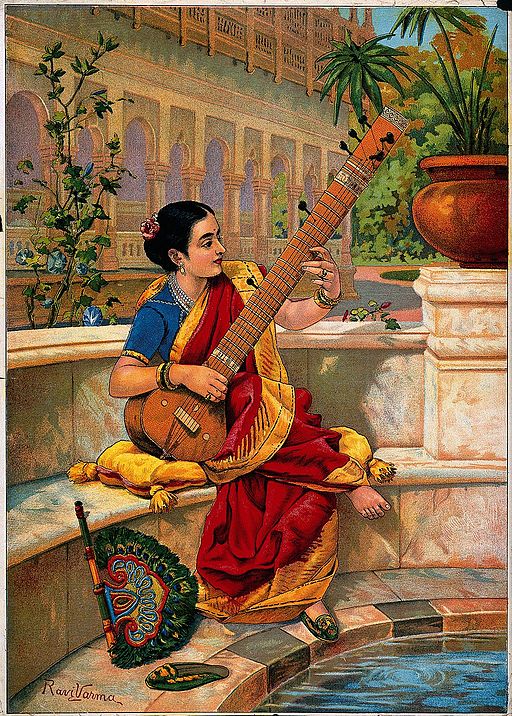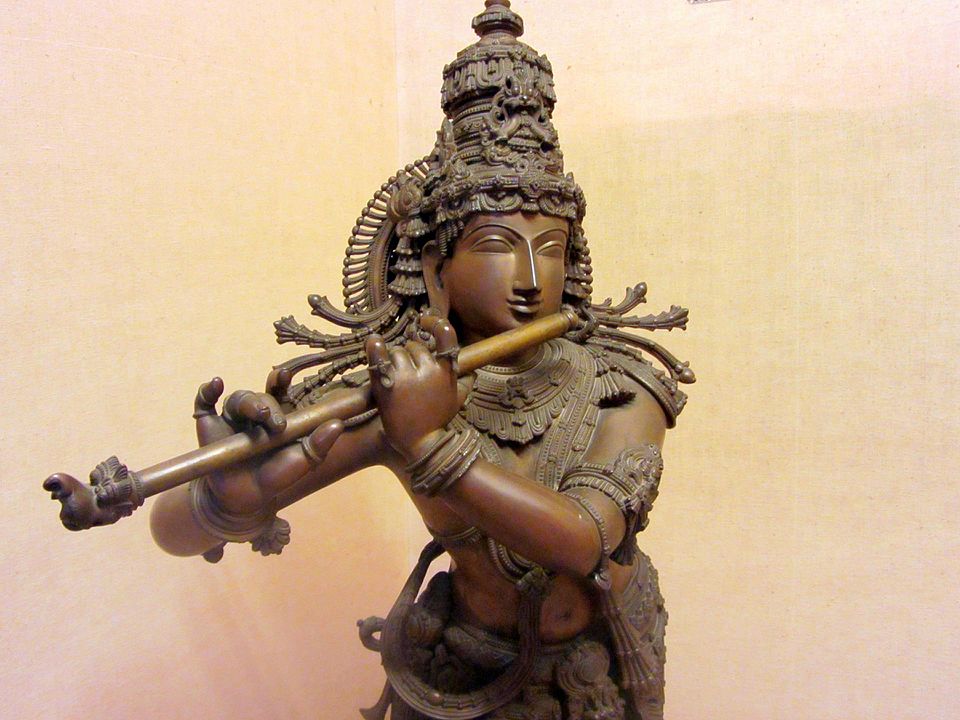Music, the melodious wonder of this universe is of the same age as the first particle of the universe. In Indian mythology, it is believed that music was nurtured by Lord Brahma (the creator of this universe). And later this mesmerizing trait was bestowed upon Lord Shiva (the lord of dance) followed by Goddess Saraswathi (the Goddess of art). Furthermore, Narada is considered the first sage to be introduced to the laws of music who brought this heavenly practice to the mortal world.

Indian music is a book containing vibrant chapters of history, from where comes its lively features. The richness of Indian music is the gift of these pages filled with reigns of different cultural beliefs. India has seen variegated dominant cultures that contribute to the extensive music culture it possesses.
Indian music is primarily based on Hindu religion originating from Sam Veda with a touch of flavors from the Mughal era. The history of Indian music history runs parallel to the history of India.
Indian Music Sowed in Sam Veda
The very first seed of Indian music was sown in the prosperous pages of Sam Veda. Sam Veda contains the hymns composed by the priests in the Vedic era to praise the nature gods. In the Vedic era, Udgatru used to chant hymns to invite deities during the yajna. Sam Veda consists of the collection of these hymns or Richas known as the Samhita. The majority of these Mantras are borrowed from Rig Veda but the musical aspect is added by Sam Veda only.

The very first form of Indian music is the Vedic music whereas the lyrics are the Richas. The composition of these hymns in the form of notes is Sam and the whole song thus developed is the Samgana. The instruments used in the Vedic Music were veena, bhoomi-dundubhi, talav, tunav, dundubhi, etc. Along with sowing the seed of Indian music Sam Veda also established an eternal and eloquent relation between music and our pristine religious beliefs. Sam Veda also gave birth to an integral part of Indian music the sargam. Sargam is the collection of seven notes in Indian music namely, Ṣaḍjaṃ, Riṣabh, Gāndhār, Madhyam, Pañcham, Dhaivata, and Niṣād. We also address this astonishing chain as seven svaras. As Sam Veda has elaborately described each aspect of music, it also defines the series of these seven svaras as Saptak.
With the seed ready to burst its limits music experienced evolution along with the continuing story of India.
The Nurturing by Gupta Era
In order to germinate the seed of the Indian music Gupta era nurtured it with love and creativity. The evidence of Indian music during the period comes prominently from the works of Kalidasa and Vatsyayana. Kalidasa has mentioned a few musical instruments portraying the musical culture of that period namely Shankha, Pushkar, Mridang, Parvadini Veena, Vamshi and Vipanshi veena.
Progressing from only the spiritual hymns music has now become a source of pleasure thus different forms of songs are also introduced by Kalidasa such as Apsarogeeti, Streegeet, Kakaligeet. Whereas Vatsyayana in his splendid work comprising of 64 Kalas (arts) has mentioned singing, dancing and playing musical instruments included in these Kalas. Along with this the foreign visitor Fa-hien has also mentioned the mirthful usage of music in this era. It was in the Gupta period only when Indian Music grew luscious leaves depicting the various genres.
Growth of the Branches
Inspired by Natyashastra of Bharat Muni, Matanga Muni wrote one of the most prominent texts regarding Indian music. This Sanskrit test was the first one to branch music into two namely marga (classical) and desi (folk). This marvelous work of art was the first to address raga directly and to bring the concept of Sargam solfege into play.
Sargam solfa is the singing of the first syllable of the names of seven svaras. Matanga Muni has explained the astounding placement of seven notes into 22 srutis with different distances among the notes using two-dimensional prastara (matrix). Furthermore, he claimed that subdivision in microtones has 66 srutis and ideally there are infinite numbers of srutis. Thus, Brihaddeshi provides an interesting turn to Indian music.
The Rain of Islamic Influence
Moving further in the history of India, the mystical Sufis were welcomed to the land of wonders. With the coming of Sufis, Indian music was influenced to a great extent by their culture because the Sufi mystics were known for their love for music. Later the emergence of Amir Khusrau popularly known as the father of qawwali blended Indian music with the droplets of Persian and Arabian music. Holding to his position he also blossomed the flowers of Khayal and Tarana style.
Bhakti Movement Bestowing the Sunrays
Bhakti movement left a great impact on Indian music. It was the period filled with captivating and flawless religious activities. The use of regional language like Braj, Avadhi, etc familiarised the social strata with the ravishing concept of music. The prominent composers of this age include the extraordinary Jayadeva, Vidyapati, Chandidas, Narasimha and Meerabai. One of the prominent evolutions of this period was the shift from pakhavaj to table.
The Fruits Generated During the Mughal Era
Now the plant of Indian music was well flourished but was lacking the vibrant flavors of fruits. The Mughal era fulfilled this gap as well. It was this era when music shifted from the temples to darbars. Now music was used as a medium of entertainment in order to please the patrons.
It was during Akbar’s reign when music was growing its branches into all the corners of India. An eloquent amalgamation of Indian and Persian music was witnessed during this era. One of the greatest singers of all time Tansen was a member of Akbar’s darbar who took music to the greatest heights.
Works of Abdul Fazal records the rich music culture of this era incorporating the flawless musical instruments such as sarmandal, been, nay, karna and tanpura. Following Akbar, all the Mughal rulers were admirers of this art and patronized this melodious art form except for Aurangzeb. It was Muhammad Shah Rangila who reintroduces Qawwali in an innovative and enchanting form. Mughal era proved to be a Golden age for Indian Music enriching it with various magnificent features and promoting it to those corners of India where the music never traveled before.
The Manure of 19th and 20th Century
Now music was employed primarily for pleasure and entertainment. In the 19th and 20th century the coming of cinema turned tables in the field of Indian music. The use of music in Indian cinema popularised Music like never before and introduced legion types of songs.
The Firmly Standing Tree of Indian Music
In modern times the seed of Indian music has been prospered into a firmly standing tree enriched with the glorious flavors of flowers and fruits and its branches spreading to all the corners of India as well as the world. Today Indian classical and folk music stands proudly in the domain of music. Though the pristine music is still alive nowadays fusion is more popular among the youth. New innovations with Indian music keeping in mind the real feel of the original is the new mantra in the song industry.
Indian music is an integral part of Indian art and culture. It’s an eloquent medium to promote the very gist of Indian culture. Through the spread of this mesmerizing art form Indian culture is singing its melodies throughout the territories of India. The roots of this art are not limited to Indian territory only making India the proudest parent. Indian music spreads its roots in the lands all over this world.
